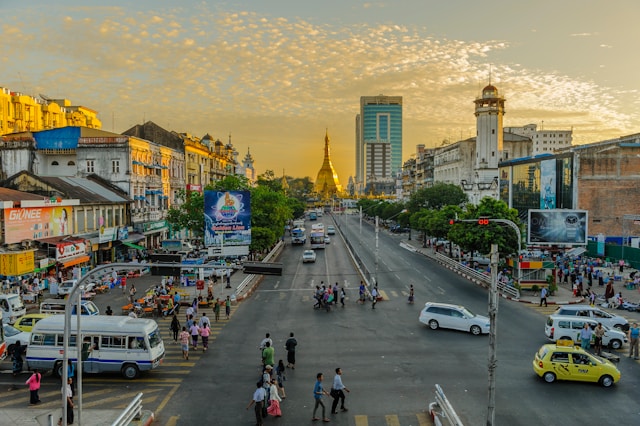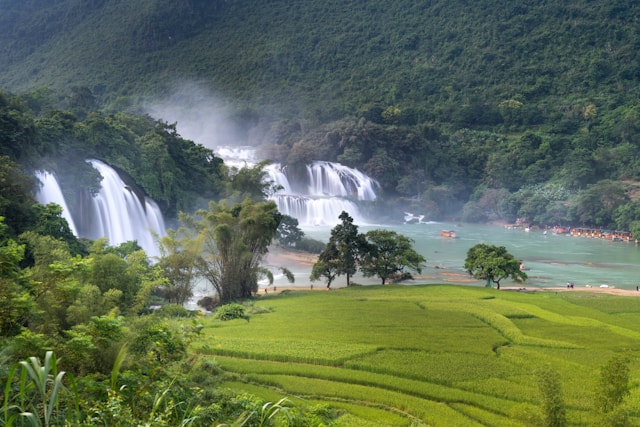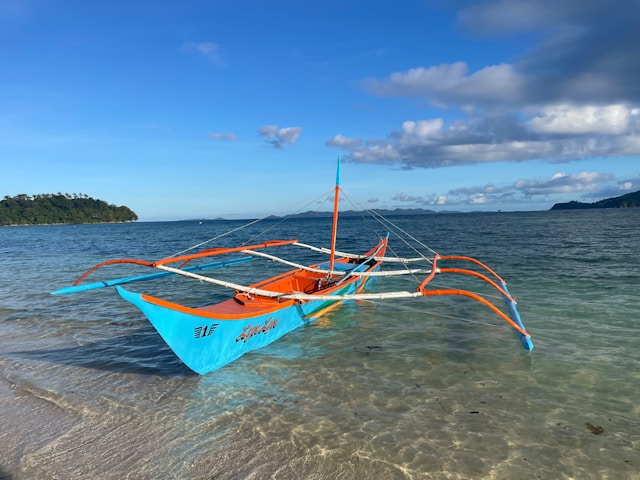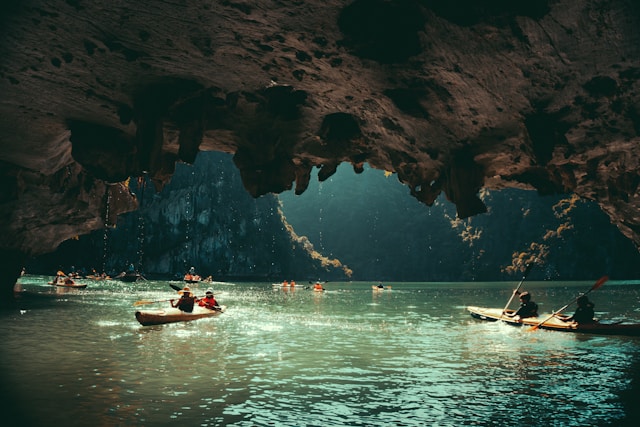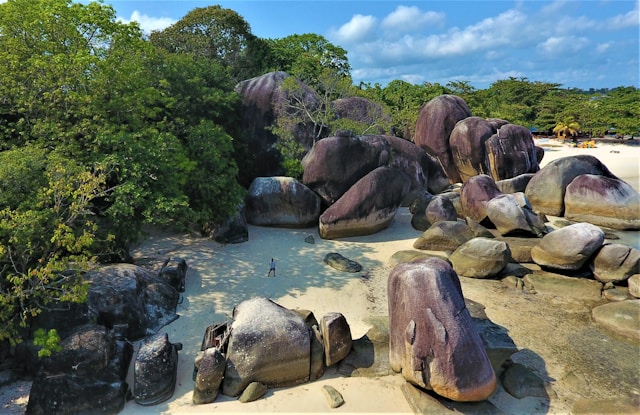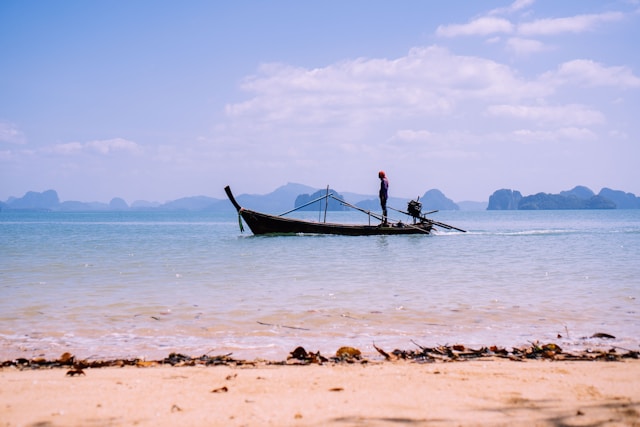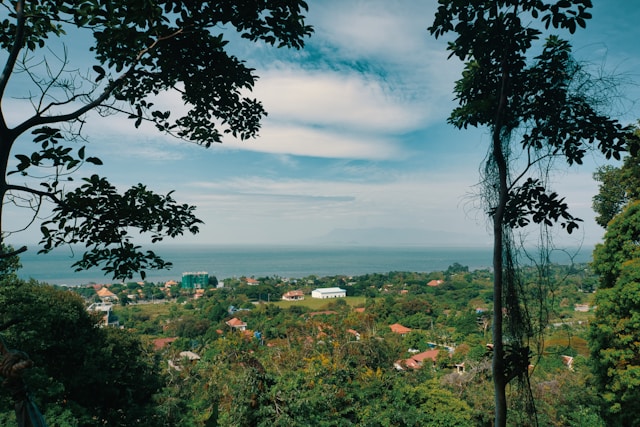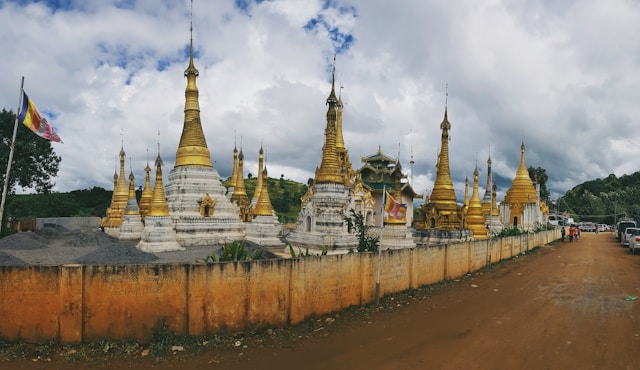Southeast Asia is a traveler’s dream: lush jungles, ancient temples, vibrant cultures, and white-sand beaches. Most people are familiar with hotspots like Bali, Phuket, or Ha Long Bay, but there’s a quieter, lesser-explored side of this region that remains untouched by mass tourism. These hidden gems in Southeast Asia offer authentic experiences, serene landscapes, and a chance to connect more deeply with local traditions and nature.
If you’re looking to escape the crowds and explore off the beaten path Southeast Asia, here are some secret travel destinations you probably haven’t heard of—but absolutely should.
1. Ban Gioc Waterfall – Vietnam
Tucked away near the Chinese border in northern Vietnam, Ban Gioc Waterfall is one of the most spectacular yet least-visited natural wonders in the country. The thundering cascade spans nearly 300 feet and is surrounded by rice paddies and towering limestone karsts.
Why it’s special:
Ban Gioc is the widest waterfall in Vietnam and shares its flow with China. The area remains quiet and serene, making it perfect for photography, nature walks, and picnicking.
How to get there:
From Hanoi, it takes about 8 hours by car or bus to reach Cao Bang Province. From there, local transport or private taxis can take you to the falls.
Best time to visit:
September to October, when the waterfall is most powerful and the surrounding fields are lush and green.
2. Siquijor Island – Philippines
Often overshadowed by Boracay or Palawan, Siquijor is a mystical island known for its pristine beaches, waterfalls, and local folklore involving healing rituals and shamans.
Why it’s special:
Siquijor offers a mix of natural beauty and mysterious charm. You can swim in Cambugahay Falls, relax on Paliton Beach, or explore ancient balete trees and caves.
How to get there:
Fly to Dumaguete City and take a ferry to Siquijor (about 1.5 hours). Scooters are the best way to get around the island.
Best time to visit:
March to May for dry weather and optimal beach conditions.
3. Kong Lor Cave – Laos
Located in central Laos, Kong Lor Cave is a hidden adventure destination that few travelers include in their itinerary. This 7.5-kilometer limestone cave is navigable by boat and cuts through a massive mountain.
Why it’s special:
Inside, the darkness is broken only by headlamps, revealing stunning rock formations, underground rivers, and cathedral-like caverns. It’s an otherworldly experience for nature lovers.
How to get there:
From Thakhek, take a bus or hire a van to Kong Lor village. Guided boat tours of the cave are available on-site.
Best time to visit:
November to March, when water levels are ideal and the air is cool.
4. Belitung Island – Indonesia
While Bali draws millions of visitors, Belitung remains one of the most undiscovered places in Southeast Asia. Located off the coast of Sumatra, this island boasts surreal granite rock formations, turquoise waters, and quiet beaches.
Why it’s special:
Belitung’s seascape is often compared to the Seychelles, with snorkeling, island-hopping, and fresh seafood all part of the experience.
How to get there:
Fly from Jakarta or Batam to Tanjung Pandan Airport on Belitung. Local tours and motorbike rentals make exploring easy.
Best time to visit:
April to October during the dry season.
5. Koh Yao Noi – Thailand
Just a short boat ride from Phuket or Krabi, Koh Yao Noi offers a peaceful escape from Thailand’s party islands. Here, time slows down and traditional Muslim fishing villages coexist with yoga retreats and eco-resorts.
Why it’s special:
The island has retained its local character. Think coconut farms, sea kayaking through mangroves, and dining on the beach without the crowds.
How to get there:
Ferries and speedboats depart daily from Phuket and Krabi. Motorbike rental is the best way to explore.
Best time to visit:
December to April, when the weather is dry and sunny.
6. Kep – Cambodia
Once a French colonial retreat, Kep is a sleepy coastal town that blends colonial history with seaside charm. Known for its crab market and nearby national park, Kep is ideal for slow travelers.
Why it’s special:
Visitors can explore pepper plantations, hike scenic trails, and eat freshly caught crab served with Kampot pepper. The offshore Rabbit Island (Koh Tonsay) offers pristine beaches with minimal infrastructure.
How to get there:
A 3-hour drive from Phnom Penh or 1 hour from Kampot. Tuk-tuks and bicycles are common transport modes.
Best time to visit:
November to February for cooler, dry weather.
7. Mawlamyine – Myanmar
Myanmar’s fourth-largest city, Mawlamyine, feels like a time capsule with colonial architecture, Buddhist pagodas, and a riverside promenade. It’s a city with soul, offering insight into authentic Burmese life.
Why it’s special:
Visit the world’s largest reclining Buddha at Win Sein Taw Ya, explore local markets, or take a sunset cruise on the Thanlwin River.
How to get there:
From Yangon, take a domestic flight or bus. Local transportation includes motorbike taxis and tuk-tuks.
Best time to visit:
November to February for comfortable weather.
Travel Tips for Visiting Hidden Gems
Venturing to secret travel destinations in Asia can be incredibly rewarding, but a little preparation goes a long way:
-
Infrastructure may be basic. Expect limited internet, fewer ATMs, and occasional power outages.
-
Pack light but smart. Include essentials like insect repellent, a power bank, and travel insurance.
-
Respect local customs. Dress modestly in rural areas and always ask before taking photos.
-
Travel sustainably. Support local businesses, avoid plastic waste, and choose eco-conscious accommodations.
-
Stay flexible. Transportation may not always be on time, and plans might need to change last-minute.
Conclusion
While famous tourist spots will always have their appeal, there’s something magical about uncovering hidden gems in Southeast Asia. These off the beaten path Southeast Asia destinations allow you to connect more deeply with local cultures, enjoy unspoiled natural beauty, and create stories most travelers will never know.

